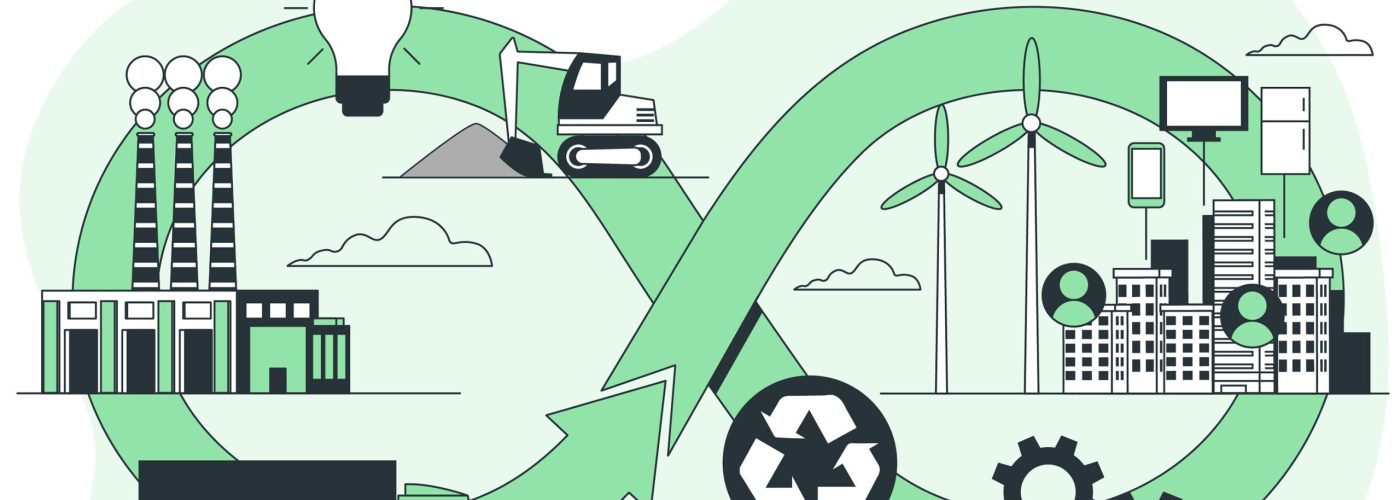Sustainability is currently the number one priority for society and the business world. Today, both business and industry face greater expectations to track and manage their sustainability metrics. Life Cycle Assessment (LCA) is one of the methodologies that has received attention for its potential to enable change. It is a comprehensive technique that helps organizations to see the environmental impact of their products or services from the cradle (raw materials) to the grave (disposal). Companies can leverage platforms like Life Cycle Assessment by Greenly to comply with shifting regulations, save money, and create new profitable business lines.
What Is Life Cycle Assessment?
A Life Cycle Assessment (LCA) is a process of describing in detail the environmental impacts a product or a service causes to the environment in distinct stages or segments of its life. These stages include the following:
- Raw Material Extraction: Determine the natural resources and their costs.
- Manufacturing: Analyze and assess the energy, emissions, and waste associated with the production of the item.
- Distribution and Use: Transit and the product’s performance in the use phase are evaluated.
- End-of-Life: Assess recycling, reusing, or discarding options.
Based on Life Cycle Analyses or LCAs, a business can discover inefficiencies, reduce costs, implement sustainable measures, and gain an overview of the environmental impact concerning a product. It was noted from Greenly that the process can be simplified through the use of digital platforms, which enables the generation of accurate assessments in a few days instead of months.
It is thus essential to consider LCAs for sustainable assessments to:
1. Satisfy Compliance Demands.
With the advent of global regulations such as the Corporate Sustainability Reporting Directive (CSRD) and Environmental Product Declarations (EPD), compliance LCAs are growing in relevance. In order for a business to achieve and maintain compliance, a preparatory assessment of possible environmental risks and compliance LCAs is essential. Thus, LCA is an efficient route to help businesses mitigate compliance risks.
2. Foster Eco-Design Advancements
A deeper product life-cycle assessment enables the recognition of the environmental stressors that impact the carbon footprint of a product, making it easier for businesses to replace such materials or processes with lower-impact counterparts. Companies that take this approach stand to gain market appeal as it significantly boosts the reputation of the company. It makes it easier for such businesses to embrace sustainable practices and stand out through innovation.
3. Improving Image and Reputation
Customers today pay attention to every detail of a product. Completing an LCA shows life cycle impacts of a product, demonstrating a Company’s dedication to Sustainability. This fosters brand loyalty and differentiates the brand. Automated reporting and data visualization done through Greenly’s LCA make communicating efforts much easier.
4. Assisting Supply Chain Choices
Procurement teams are able to assess supplier impacts owing to the LCAs. This maintains every link in the supply chain and helps achieve the set sustainability targets, which remains a concern due to the changes in climate and the scarce resources.
What are the phases of an LCA?
The LCA process is divided into four phases:
- Scope Definition: Determine the goal of the assessment and set the functional unit, which is a standard metric for product or service comparisons.
- Inventory Analysis: Gather all materials, energy, emissions, and waste for the various stages of the life cycle.
- Impact Assessment: Identify the probable environmental impacts such as the carbon footprint, water footprint, and impacts on flora and fauna.
- Interpretation: Reviewing the data collected to identify the gaps and strategizing to close those gaps in the decision-making steps.
Greenly streamlines this complicated emission monitoring workflow by providing a platform that automatically integrates data connections, applies emission factors, and generates compliant reports for and from various emissions data sources a company may have.
Real-World Applications of Life Cycle Assessment
Case Study: 48 forty and the climate leaders
Driving climate action is 48 Forty’s defining vision, and the company is proud to embrace life cycle assessments to lead sustainable climate change responses. They found cost-saving and marketing opportunities after thoroughly investigating their products and operational workflows. Their positive results go on to highlight the importance of life cycle assessments as tools for sustainable development.
Retail
Through powerful analytical tools, life cycle assessments are aiding brands to see the environmental impact their packaging, transportation, and manufacturing operations have. Biodegradable packaging, for instance, transitions many brands to low-carbon-emission products while satisfying environmentally conscious customers.
Food
Through life cycle assessments, food producers gain valuable information on a wide range of activities spanning agriculture, processing, and even the distribution of packaged food products. The knowledge helps them to embrace regenerative agriculture, minimize food waste, and curb emissions.
Advantages of Using Greenly’s LCA Platform
Greenly’s Life Cycle Assessment system is notable for its sophisticated features and easy-to-use interface. Important advantages include:
- Automated Reporting: Save time and work by creating compliant reports with ease.
- Robust Emission Factor Database: Access the most reliable data to ensure accuracy in your assessments.
- Multi-Criteria Approach: Take into account several environmental metrics, such as energy, water, and carbon footprints.
- Scalability: LCAs can be applied to individual items or whole portfolios, making them appropriate for companies of various sizes.
The Way Ahead: Adopting Life Cycle Evaluation
As the world transitions to a low-carbon economy, life cycle assessments (LCAs) will be essential in forming sustainable practices.
- They allow companies to: Meet consumer requests for clear product information.
- Reduce the dangers associated with environmental liabilities.
- Keep up with the latest regulations.
- Build resilience against climate-related disruptions.
Using tools like Life Cycle Assessment through Greenly provides businesses with the opportunity to innovate and aspire to contribute positively towards a more sustainable planet while also becoming more competitive. The first step in the journey towards sustainability is to understand and take action on the full capabilities of environmental impact of a product/practice.
Conclusion
A Life Cycle Assessment is an exercise of more than just technology and emissions information. It is a real tool of change for innovation. In a world dealing with the growing climate crisis, these types of assessments provide actionable opportunities for innovation, impact, and efficiency. No matter how big or small, developing a methodology not only supports the development of a sustainable future for your business but for the planet as well. See how Greenly’s Life Cycle Assessment platform can help move your sustainability journey forward today.





